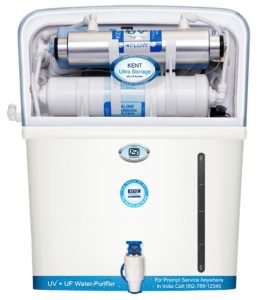Reverse Osmosis technology (RO) is considered by most vendors as the ‘Cadillac’ of home water filtration. (Perhaps it’s because like a Cadillac, it makes them lots of money!)

RO
is a central technology in industry, healthcare, food, beverage, bio-pharm, automotive, marine, drinking water and many other applications that are important to our lives. Used properly it is literally a miracle technology.
However, RO is not a panacea and like all water treatment technologies, it changes the properties of water. Let’s look at some of the unsaid aspects of home RO
The number of vendors, brands and styles of RO systems are as varied and numerous as the mind can fathom yet there are two basic systems that we can purchase.
- Under the counter/countertop RO systems
- Whole-house RO systems
As we learned earlier, a major feature of an RO system is that of all the purification technologies vendors offer the widest span of the types of contaminants it will remove. Literally, and RO system can make safe drinking water out of virtually any feed water type from industrial waste, radioactive water, and even municipal sludge.
Let’s just not put RO to those tests, okay?

Even with its amazing contaminant removal abilities, RO is not a panacea, and can create just as many problems as it alleviates.
For instance:
- For proper membrane life, RO feed water must be softened. This adds both initial expense and operating expense for a water softener, and salt. An RO can be run on hard water, but the membrane will scale and require frequent and costly replacement. Iron will also quickly foul an RO membrane
- Small RO systems, those making 100 gallons per day or less can send to the drain as much as 83 gallons for every 17 gallons of clean water consumed.
- RO water tastes flat to most people.
- RO water is devoid of chlorine and so it readily grows bacteria as it sits.
- RO is prone to absorbing CO2 from the surrounding environment thereby forming carbonic acid which can cause the water to taste metallic, and the pH of the water to drop into the 5.5 range.
- The lower in contaminants (TDS) the RO feed water is, the purer and more aggressive (acidic) the RO product water will be.
In areas with exceptionally low TDS feedwater, the water produced by RO, in a whole house water system can leach lead and copper out of the plumbing system and contaminate otherwise safe drinking water drinking water. - RO removes all beneficial alkaline minerals from your water. Having taken them out, RO makers then sell you a post-filter to put them back in. Crazy. Paying to take them out then paying again to add them back in.
Our advice?
Before putting RO technology in our homes, you first have to have an understanding of why you are installing it and how it will change our water. And check very carefully for actual test results on the model you are looking at. Not just an industry-standard test that applies to all RO units, but individual and independent laboratory test results for the one you are considering. Why is this so important? Because many units are simply not as efficient as they claim. Fluoride, for instance, may only be reduced by up to 75%.
Finally, two more things.
Be aware that an undersink RO takes up a lot of undersink space.
And an RO’s filter change, especially in the lower cost units can be a nightmare!
Have we convinced you one way or the other?
..If we convinced you to take a better look around at other, simpler technologies, here’s a good place to begin.



